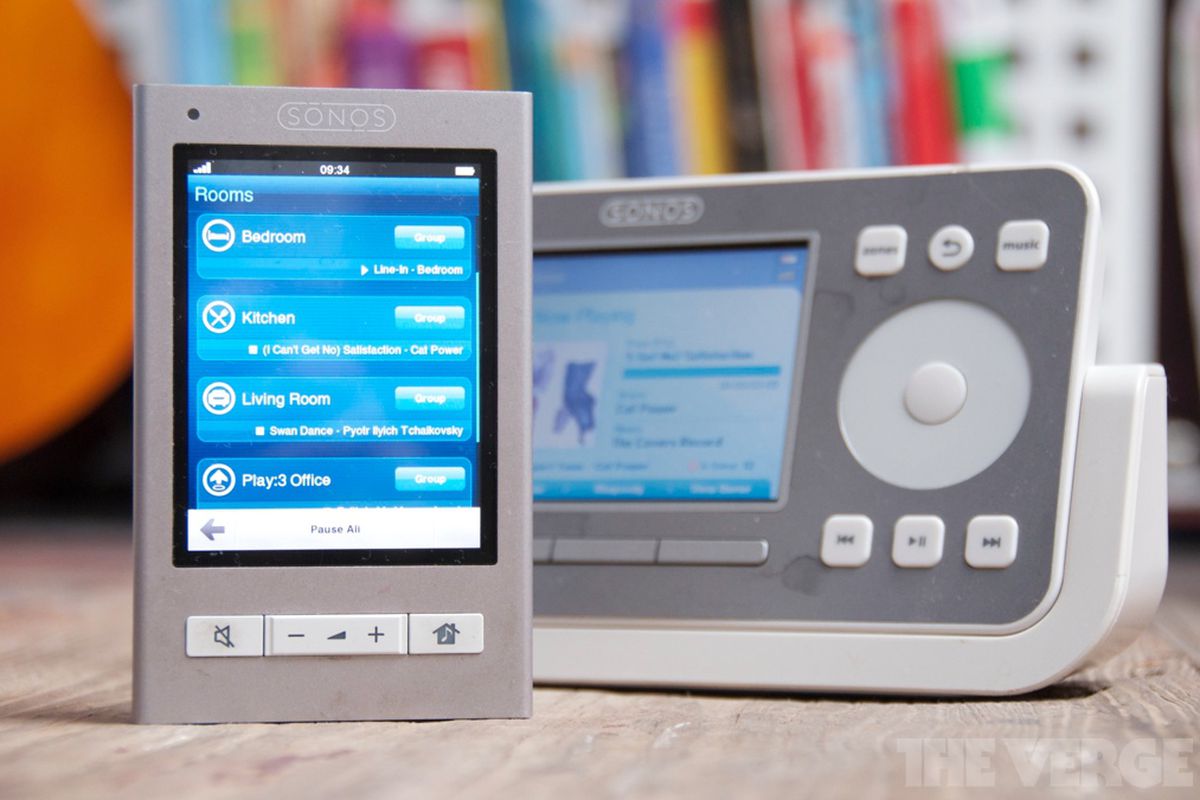The Sonos CR100 will soon be no more.
Today it look like an anachronism, but it was a game changer of a product. Although borrowing heavily from the then contemporary iPod, it revolutionised the way we could engage with our still nascent digital music collections. In conjunction with the rest of the Sonos system, at that time either a box that plugged into your stereo or an amplified module you connected speakers to, it helped forge a path for multi-room music. At that point in time multi-room music generally involved a multi-disc CD player and a zone amplifier. Originally confined to your music, Sonos embraced streaming solutions, then wireless speakers and is now a name synonymous with the entire category.
This is a success built on their controller – a device that made it easy for just about anyone to access digital music. Prior to Sonos, we were selling roku soundbridges and Squeezeboxes. Both of the devices worked. But only barely. Finding music on them was a pain. Then Sonos released the CR100. We resisted Sonos in store for the longest time. Everything it said it could do, we had been promised before. But this time, it actually worked. It sounded pretty good. The wireless was phenomenal. And that controller. It actually made browsing music effortless. It completed the system.
But time marches on. The controller was actually discontinued in 2009. Touchscreens had become de rigueur so the replacement CR200 was introduced. The Sonos app would follow shortly after too. The CR100 was a discontinued product, but it still continued to function. It still received software updates. It could still control new sonos products like their burgeoning range of speakers. It could no longer be purchased, but it still did its job quite happily.
That will change in April.
In April, Sonos will release a software update that will render the CR100 incapable of connecting to the rest of your system. It will become a well sculpted paper weight. An electronic device that doesn’t do anything.
We talk a lot about technology becoming obsolete. Old computers that can no longer keep up with modern programs. VCRs haven’t had any new content to play in a decade. Phones and tablets that are big and bulky compared to new models. But here’s the thing about those old computers and VCRs. They still work as functioned, playing old tapes and running Windows 95. Even your old phone still places calls. It may no longer receive software updates, but chances are it still plays music and videos fine. The CR100 will be different to this. Sonos isn’t just no longer supporting this device. They are stopping it from functioning. It’s not that it won’t work with new sonos products. It won’t work with old Sonos products either. Like the ones you already own.
Sonos is at least offering some compensation to customers. Sonos will recycle the units free of charge. They will also offer you a credit towards purchasing another Sonos product. This isn’t a perfect solution. For a start, you can’t use the credit to purchase a new controller. Sonos don’t make one anymore. You can’t use the credit to purchase a phone or tablet to use as an interface either, as it’s only good for Sonos products. You could use the credit to purchase another Sonos zone. But do you need another zone? Do you even want one?
And then there is the lingering question that this has created: What’s next? My Sonos system still has a ZP-100 and ZP-80 in it. Both discontinued 10 years ago. Both still work well. Will Sonos decide to cut these products loose too? Will I end up with an amplifier that can’t amplify anything? This is a reasonable question now. The future for Sonos is in wireless speakers. They haven’t released a new amplifier in a decade. What is to stop Sonos from releasing an update to silence this model too?
We had a good run with the CR100. It had a life that should be envied in this industry. But the manner of its demise will leave a bitter taste in customers mouths. I understand that it had to be done - Sonos can’t support the device indefinitely. Having to support this product might be holding the developers back from creating the next revolution. But to have this obsolescence absolutely enforced is crossing a line I’m not sure Sonos can walk back from.

